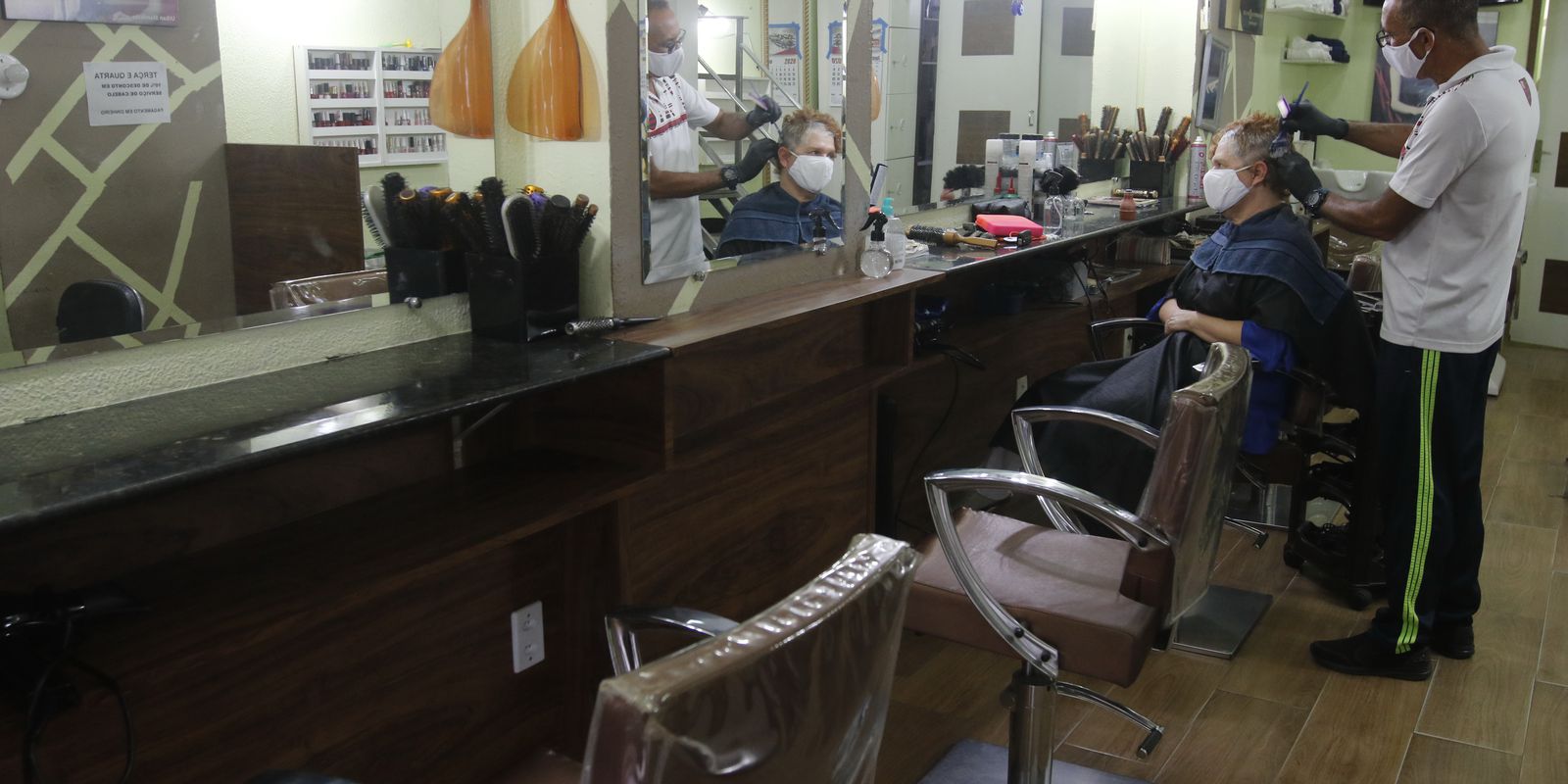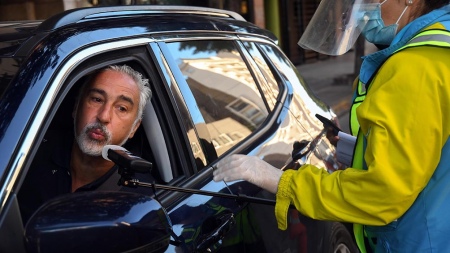The pandemic caused different effects in Brazilian municipalities, which varied according to the importance of the service activities of each one, especially face-to-face ones. Faced with the restrictive measures of isolation and precaution of contagion by families, the services gathered the activities that had the biggest drops in participation in the country’s economy between 2019 and 2020.
The assessment is part of the 2020 Gross Domestic Product (GDP) survey, released today (16) in Rio de Janeiro by the Brazilian Institute of Geography and Statistics (IBGE).
According to the results, in 2020 nine cities accounted for almost 25% of the national GDP and 15.3% of the Brazilian population. In this group are São Paulo, with 9.8%; Rio de Janeiro, 4.4%; Brasília, 3.5%; Belo Horizonte, 1.3%; Manaus, 1.2%; Curitiba, 1.2%; Osasco (SP), 1%; Porto Alegre (RS), 1% and Guarulhos (SP), 0.9%.
There was also a change in the position of cities in the comparison between 2002 and 2020. Manaus rose from seventh to fifth position; Curitiba, from Thursday to Friday; Osasco (SP), from 16th to seventh; Porto Alegre, from sixth to eighth and Guarulhos (SP), from 14th to ninth.
Furthermore, the 82 largest municipal GDPs represented approximately half of the total national economy and 35.8% of the country’s population. In 2002, when the published series began, only four municipalities accounted for about ¼ of the country’s economic activities.
Still in 2020, the 1,275 municipalities with the lowest GDPs accounted for around 1% of the national GDP and 2.9% of the Brazilian population. Among them, the 148 located in the states of Piauí and the 135 in Paraíba represented more than 60% of the municipalities in their states. At the beginning of the series, 1,383 corresponded to 1% of GDP and amounted to 3.7% of the national population.
urban concentrations
In the distribution of GDP by urban concentrations, according to the IBGE, it is possible to verify “the relative reduction in the economic importance of large urban centers in the year 2020”.
In 2019, approximately 25% of Brazil’s economic output was in São Paulo and Rio de Janeiro alone. In 2020, the two added up to 23.7% of the national GDP, with São Paulo accounting for 16.2%, which means a drop of 0.7 percentage points (pp), and Rio de Janeiro for 7.4%, representing a decrease of 0.5 pp.
The IBGE Regional Accounts analyst, Luiz Antônio de Sá, reported that this trend of deconcentration was under way before the pandemic, but it has been expanding.
“Throughout our historical series, some activities gained participation in the Brazilian economy that were contributing to this deconcentration. In agriculture, for example, soy cultivation did not suddenly gain share in the Brazilian economy in 2020, it was already gaining share, giving more weight to agriculture,” he said, adding that the extraction of iron ore and oil and the generation and electricity distribution are other activities that also advanced and contributed to deconcentration.
“Rio de Janeiro is a state that historically has a very large weight in the extractive industries, but, throughout the series, we observe other states gaining participation and Pará is one of them”, he stressed.
Luiz Antônio also stated that, in 2020, activities that had been advancing throughout the historical series continued to develop, unlike the services sector, which fell due to the impact of the pandemic.
“What sustained capitals like São Paulo and Rio de Janeiro, to a large extent, were services and, while they were all average, those municipalities outside the capital axis grew, which was already a motivator for deconcentration. Now that they have continued to grow and services are still falling, this has intensified the scenario that had already been in place since 2002”, he concluded.
Inequality
The IBGE pointed out that the 10 largest Brazilian urban concentrations had a reduction in their relative participation in the national economy. In 2020, these concentrations amounted to 40.5% of GDP, a reduction of 2.3 pp compared to the weight of 2019.
Marcelo Araújo, a geographer at the IBGE, said that the loss of large urban centers over the course of the historical series does not mean that they are becoming poorer. “National GDP is rising and these larger cities are experiencing lower growth than national growth, which is why there is a trend towards convergence and a reduction in spatial inequality in GDP,” he noted.
With regard to the major regions, it is noted that, in 2020, the pattern identified in the country is repeated, with a concentration of GDP in a few municipalities. However, in the comparison between 2002 and 2020, the number of municipalities that accounted for up to ½ of the local economy increased. In the North Region, from six to eight; in the Northeast, from 25 to 36; in the Southeast, from 13 to 21; in the South, from 31 to 38; and, in the Midwest, from one to five.
rural regions
Araújo also revealed that it was not only in the Legal Amazon that there was growth in rural regions as a result of the increase in production and prices. According to the geographer, the positive performance was also noted in the Midwest and Southeast.
“Excepting the rural regions of the South that experienced drought and losses, all the others registered a good performance. Productivity has increased, but above all the price effect will cause a good generalized result. The increase that has been seen in agriculture in the Amazon, more or less the price of the products explains ”, he opined.
economic density
The analysis of the municipalities’ GDP in 2020 also reveals a reduction in spatial concentration due to the decline in the participation of urban concentrations in the national economy.
While the economic density in Brazil stood at 896 thousand R$/km², the large and medium-sized urban concentrations had a density of 9,193 thousand R$/km², that is, about 10.3 times greater than the average for the national territory.
“Although this value shows a very pronounced spatial concentration, it is lower than that seen in 2019, when large and medium urban concentrations had a density about 10.6 times greater than the average for the Brazilian territory”, said the IBGE.
GDP Gini Index
When considering the municipalities, the GDP Gini index – an instrument that measures the degree of income concentration in a given group – was 0.84 in 2020, and remained practically unchanged throughout the analyzed series. In 2020, only the states of Amazonas and São Paulo had a Gini index higher than the national one, with values of 0.87 and 0.86, respectively.
The lowest indicators were observed in Mato Grosso do Sul, with an index of 0.66, and in Mato Grosso, with 0.68.
GDP per capita
The 10 municipalities with the highest GDP per capita (per head) accounted for 1.6% of the national GDP in 2020, and 0.2% of the Brazilian population. The city with the highest value was Canaã dos Carajás, in Pará, with R$ 591,101.11. There, the extraction of iron ore was the main activity. The cities of Selvíria (MS) and Davinópolis (GO), which held the second and tenth positions, are on the list because of hydroelectric power generation.
In the third and sixth positions were the cities of Louveira (SP) and Extrema (MG), due to trade and repair of motor vehicles and motorcycles and transformation industries. Among the capitals, Brasília, with BRL 87,016.16, was in first place in relation to GDP per capita in 2020, while Salvador was in last place: BRL 20,417.14.
“The municipalities of Paulínia (SP) and São Francisco do Conde (BA), in the fourth and ninth positions, had the oil refining industry as their main activity. Gavião Peixoto (SP) occupied the fifth position because of the activity of transformation industries, with emphasis on the manufacture of aircraft. Ilhabela (SP) and Presidente Kennedy (ES), in the seventh and eighth positions, stood out with the extraction of oil and gas”, completed the IBGE.
Evolution
From 2019 to 2020, of the 185 existing urban concentrations in the country, 92 lost their share in the national GDP, while the rest increased. Among those that advanced the most in the period is Parauapebas (PA), which changed from 0.3% to 0.5%. Afterwards, Jundiaí (SP) and Manaus appear.
On the other hand, the six largest reductions in participation in the national GDP in this period occurred in large urban concentrations such as São Paulo, which presented the greatest decrease – from 17% to 16.2% -, followed by Rio de Janeiro, Curitiba, Porto Alegre, Brasília and São José dos Campos (SP).
Economic profile
In 2020, 2,620 municipalities, representing 47% of Brazilian cities, had administration, defense, education, public health and social security as their main economic activity. In the states of Acre, Roraima, Amapá and Paraíba, this percentage exceeded 90%.
In Paraná, only 7% of its municipalities had this characteristic. Among the 275 cities in which the main activity, in 2020, was the manufacturing sector, 220 were concentrated in the Southeast and South regions, which is equivalent to 80%. In agriculture, Mato Grosso had the highest percentage of cities linked to the activity, followed by Mato Grosso do Sul and Paraná.
The results of the Gross Domestic Product (GDP) survey of the 2020 Municipalities are prepared by the IBGE, in partnership with state statistical bodies, state government departments and the Superintendence of the Manaus Free Trade Zone (Suframa).
For the IBGE, “the methodology adopted for the estimate is uniform for all federation units and conceptually integrated to the procedures adopted in the National Accounts System (SCN) and in the Regional Accounts System (SCR)”, he explained.
With that, the IBGE considers that the published results are consistent and comparable with each other and with the results of the SCN and SCR.
“The gross added values of the three groups of economic activity are presented at current prices: agriculture, industry and services, in addition to administration, defense, education, public health and social security, due to the importance of this activity in the Brazilian economy, as well as taxes, net of subsidies, on products; GDP and GDP per capita”, he assured, noting that the information, in addition to establishing macroeconomic relationships, makes it possible to outline the economic profile of each of the municipalities in Brazil.










